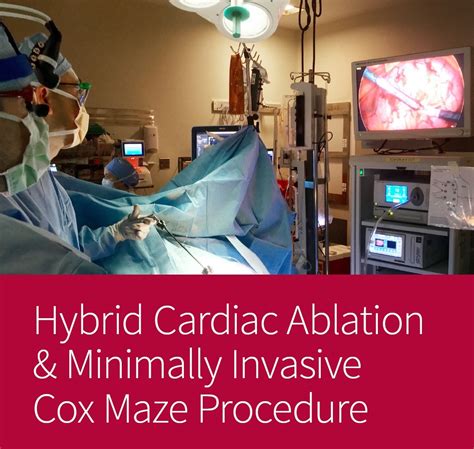The realm of cardiology has witnessed significant advancements in recent years, with one of the most notable being the development of minimally invasive procedures for treating heart conditions. Among these, the heart ablation procedure stands out as a highly effective and low-risk method for addressing irregular heartbeats, also known as arrhythmias. This procedure involves the use of advanced technologies to destroy (ablate) the abnormal electrical pathways in the heart that cause arrhythmias, thereby restoring a normal heartbeat.
Understanding Heart Ablation
To grasp the concept of heart ablation, it’s essential to understand how the heart functions. The heart is controlled by an intricate system of electrical impulses that dictate its rhythm. Sometimes, these impulses can become erratic, leading to arrhythmias. Heart ablation is designed to pinpoint and eliminate the source of these irregular impulses, ensuring that the heart beats at a normal, consistent pace.
The Procedure
The heart ablation procedure is typically performed in an electrophysiology (EP) lab by a team of skilled healthcare professionals, including cardiologists and nurses. The process begins with the patient being administered local anesthesia to numb the area where the catheter will be inserted, usually in the groin.
- Catheter Insertion: A thin, flexible tube called a catheter is inserted through a blood vessel and guided to the heart using real-time imaging technologies such as fluoroscopy or intracardiac echocardiography.
- Mapping the Heart: Once the catheter reaches the heart, the doctor uses it to create a detailed map of the heart’s electrical impulses. This mapping process helps identify the precise location of the abnormal electrical pathways causing the arrhythmia.
- Ablation: With the abnormal pathways identified, the doctor uses the catheter to apply heat (radiofrequency ablation) or cold (cryoablation) to these areas. This energy destroys the problematic tissue, thus preventing it from causing arrhythmias in the future.
- Testing: After the ablation, the doctor performs tests to ensure that the arrhythmia has been successfully treated and that the heart is beating normally.
Minimally Invasive Nature
The heart ablation procedure is considered minimally invasive due to its use of catheters and advanced imaging technologies to access and treat the heart without the need for open-heart surgery. This approach significantly reduces the risk of complications and speeds up the recovery time for patients. Unlike traditional surgical methods, minimally invasive procedures result in less pain, smaller scars, and a quicker return to normal activities.
Benefits and Risks
The benefits of heart ablation include high success rates for treating certain types of arrhythmias, low risk of complications, and the potential to eliminate the need for long-term medication. However, as with any medical procedure, there are risks involved. These can include bleeding, infection, damage to the heart or blood vessels, and the potential for the arrhythmia to recur over time. It’s crucial for patients to discuss these risks and benefits with their healthcare provider to determine if heart ablation is the right treatment option for their specific condition.
Recent Advances
Recent years have seen significant advancements in heart ablation technology, including the development of more precise mapping systems and the introduction of new ablation techniques such as robotic-assisted ablation. These advancements have increased the effectiveness of the procedure, allowing for more precise targeting of abnormal electrical pathways and potentially reducing the risk of complications.
Preparing for the Procedure
For individuals undergoing heart ablation, preparation is key. This includes stopping certain medications that may increase the risk of bleeding, abstaining from food and drink for a specified period before the procedure, and arranging for someone to drive you home afterward. It’s also essential to discuss any concerns or questions with your healthcare provider to ensure you’re fully informed and prepared.
Recovery and Post-Procedural Care
The recovery process for heart ablation is relatively straightforward, with most patients able to go home the same day or the day after the procedure. It’s common to feel a bit sore at the catheter site, and patients are usually advised to avoid strenuous activities for a few days. Follow-up appointments are crucial to monitor the heart’s rhythm and make any necessary adjustments to medication.
Conclusion
Heart ablation represents a significant leap forward in the treatment of arrhythmias, offering a minimally invasive, highly effective, and relatively low-risk solution for individuals suffering from irregular heartbeats. As medical technology continues to evolve, it’s expected that heart ablation procedures will become even more refined, providing hope for those living with arrhythmias and underscoring the importance of ongoing research and innovation in the field of cardiology.
What are the most common types of arrhythmias treated with heart ablation?
+The most common types of arrhythmias treated with heart ablation include supraventricular tachycardia (SVT), atrial fibrillation (AFib), and ventricular tachycardia (VT). Each of these conditions involves abnormal heart rhythms that can significantly impact an individual’s quality of life and, in some cases, pose serious health risks.
How long does a heart ablation procedure typically take?
+The duration of a heart ablation procedure can vary significantly, depending on the complexity of the case and the type of arrhythmia being treated. On average, the procedure can last anywhere from a few hours to several hours, during which time the patient is closely monitored by a team of healthcare professionals.
What are the potential risks and complications of heart ablation?
+While heart ablation is considered a safe procedure, potential risks and complications include bleeding, infection, and damage to the heart or blood vessels. In rare cases, the procedure may also cause AV (atrioventricular) block, requiring the implantation of a pacemaker, or may lead to pulmonary vein stenosis, a narrowing of the veins that carry blood from the lungs to the heart.
Can heart ablation completely cure arrhythmias?
+Heart ablation can be highly effective in treating arrhythmias, with success rates varying depending on the type of arrhythmia. For some individuals, heart ablation can completely eliminate arrhythmias, while for others, it may reduce the frequency or severity of episodes. The goal of the procedure is to achieve a significant and lasting improvement in symptoms, thereby improving the patient’s quality of life.
How soon can I return to my normal activities after heart ablation?
+Most patients can return to their normal activities within a few days to a week after the procedure. However, it’s essential to follow the specific instructions provided by your healthcare provider, as the recovery time can vary depending on the individual and the specifics of their procedure. Avoiding strenuous activities and heavy lifting for a period after the procedure is usually recommended to minimize the risk of complications.


